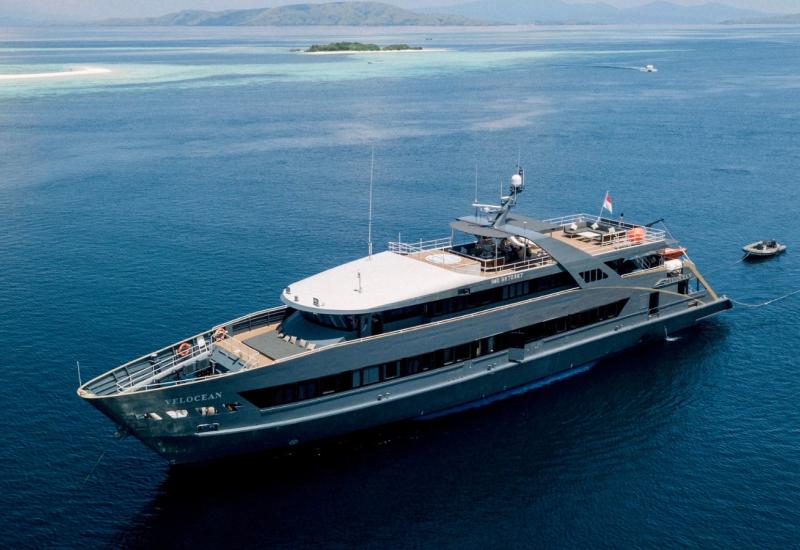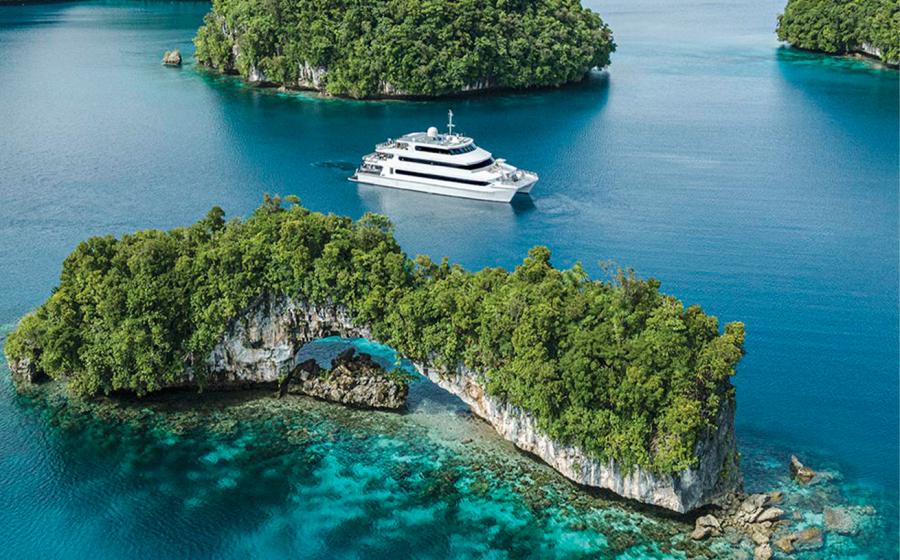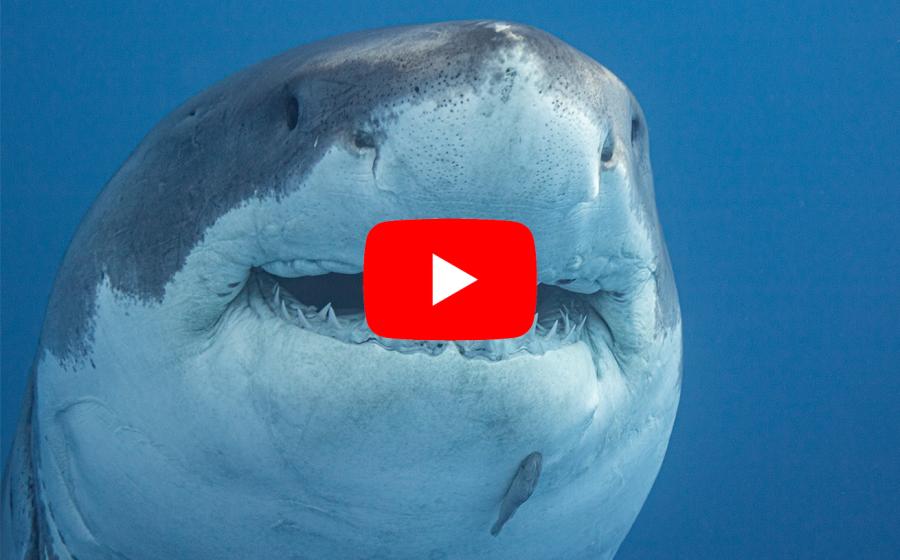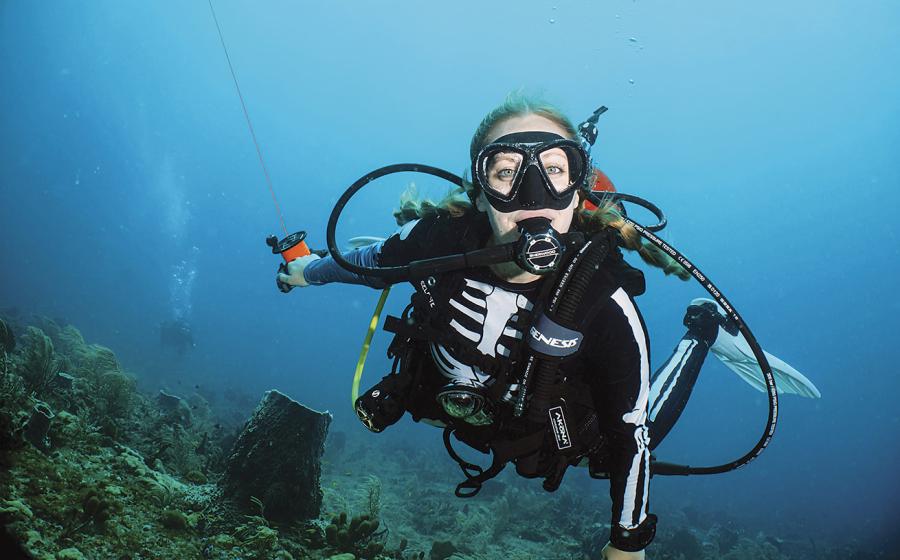Where Oceans Collide - Komodo

Famous for its giant monitor lizards, throwbacks to the time when dinosaurs reigned, Komodo Island was once only for the most adventurous of travelers, with its namesake dragons roaming wild and swift currents that toppled outriggers. But the rugged, arid terrain above the water is a stark contrast to the rich, colorful marine gardens below, and live-aboard diving has expanded the island’s possibilities. The Komodo National Park is one of the country’s major success stories. It is comprised of three major islands — Komodo, Rinca and Padar — and numerous smaller islands that dot the blue. It has fostered marine-life conservation and bolstered the tourism industry in the Nusa Tenggara region, and under the sea, each site has a new geologic twist.
Sea Oddity Sea ladybugs can be found most of the year at Yellow Wall, Cannibal Rock and Crinoid Canyon in Rinca’s Horseshoe bay. These tiny but colorful cartoonish critters of the Cyproidea family make for great subjects with a 105 mm macro lens and a lot of patience. They can be found on sponges, tunicates and crinoids.
Crystal Rock is a submerged, coral-encrusted seamount that actually pokes through the surface. There’s an amazing field of staghorn coral here, which is a testament to the incredible natural wealth of the reefs in the park. At the appropriately named Manta Alley in South Komodo, mantas glide along cuts in the rocks as they ride the wild currents. This site has even produced an occasional spotting of a Mola mola in the deep, cold upwelling. Southern Rinca is a whole new world and about as different from northern Komodo as night and day. It’s a great place to get out and explore the wild land and watch as dragons drag their heavy tails down the beach. The most-well-known dive sites here are around Horseshoe Bay. It is fed by cold, green southern waters, which at times make the corals bloom with color as they feed on the nutrient-rich flows. Sites like Yellow Wall, alive with bright-yellow soft corals and small tubastreas, and Crynoid Canyon, with myriad crinoids and long sea whips, complete the experience. Nearby Cannibal Rock packs a huge amount of marine life into one small area that barely sits below the surface at low tide. Follow the rock down and you’ll find a treasure trove of beauty, including the possibility of a rare sighting of a rhinopius, the beautiful but rare lacey scorpionfish. — TR
Need to Know
Travel Tip: Komodo also features great hiking, with the most popular trail being the two-hour round-trip trek to the Banugulung viewing area. If you’re really feeling adventurous, try an overnight hike. Simple accommodations can be arranged at ranger posts. When to Go: Dry Season is the best time to dive during the months of May through November. Getting There: Some live-aboard trips depart from Bali, while others leave from Flores. Major airlines, including Continental and Qantas, serve the international airport in Bali (Denpasar, DPS) from Los Angeles, and your live-aboard can arrange for domestic flight. Operators/Accommodations: Kararu Cruises (www.kararu.com), Peter Hughes Komodo Dancer (www.peterhughes.com), Dive Damai (www.dive-damai.com) and Worldwide Dive and Sail (www.worldwidediveandsail.com) Dive Conditions: Komodo has heavy currents, so bring a safety sausage. Water temps average 82°F, while visibility averages 70 feet. Price Tag: When you book any cruise with Peter Hughes in 2009, you can get a second cruise on Star Dancer or Wind Dancer for 50 percent off. Ten-night cruises start at $2,900 on Komodo Dancer. If you’re booking last minute, check out the specials on Kararu cruises at www.kararu.com. Eleven-day photo seminar cruises on Dive Damai are $4,510. Worldwide Dive and Sail All-Inclusive 10 days/10 nights packages to Komodo on the S/Y Siren, begin at 2400 Euro.
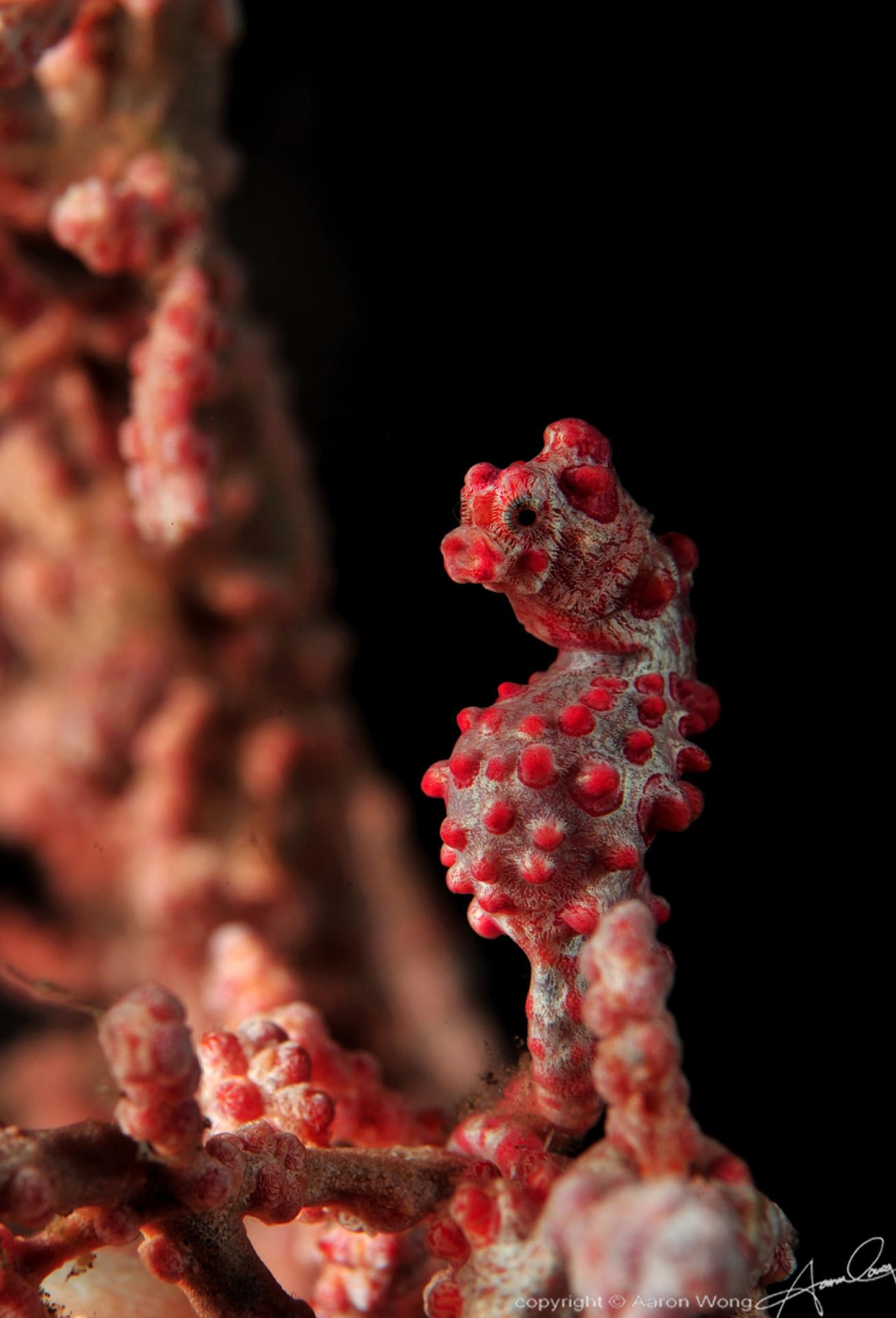
Famous for its giant monitor lizards, throwbacks to the time when dinosaurs reigned, Komodo Island was once only for the most adventurous of travelers, with its namesake dragons roaming wild and swift currents that toppled outriggers. But the rugged, arid terrain above the water is a stark contrast to the rich, colorful marine gardens below, and live-aboard diving has expanded the island’s possibilities. The Komodo National Park is one of the country’s major success stories. It is comprised of three major islands — Komodo, Rinca and Padar — and numerous smaller islands that dot the blue. It has fostered marine-life conservation and bolstered the tourism industry in the Nusa Tenggara region, and under the sea, each site has a new geologic twist.
Sea Oddity Sea ladybugs can be found most of the year at Yellow Wall, Cannibal Rock and Crinoid Canyon in Rinca’s Horseshoe bay. These tiny but colorful cartoonish critters of the Cyproidea family make for great subjects with a 105 mm macro lens and a lot of patience. They can be found on sponges, tunicates and crinoids.
Crystal Rock is a submerged, coral-encrusted seamount that actually pokes through the surface. There’s an amazing field of staghorn coral here, which is a testament to the incredible natural wealth of the reefs in the park. At the appropriately named Manta Alley in South Komodo, mantas glide along cuts in the rocks as they ride the wild currents. This site has even produced an occasional spotting of a Mola mola in the deep, cold upwelling. Southern Rinca is a whole new world and about as different from northern Komodo as night and day. It’s a great place to get out and explore the wild land and watch as dragons drag their heavy tails down the beach. The most-well-known dive sites here are around Horseshoe Bay. It is fed by cold, green southern waters, which at times make the corals bloom with color as they feed on the nutrient-rich flows. Sites like Yellow Wall, alive with bright-yellow soft corals and small tubastreas, and Crynoid Canyon, with myriad crinoids and long sea whips, complete the experience. Nearby Cannibal Rock packs a huge amount of marine life into one small area that barely sits below the surface at low tide. Follow the rock down and you’ll find a treasure trove of beauty, including the possibility of a rare sighting of a rhinopius, the beautiful but rare lacey scorpionfish. — TR
Need to Know
Travel Tip: Komodo also features great hiking, with the most popular trail being the two-hour round-trip trek to the Banugulung viewing area. If you’re really feeling adventurous, try an overnight hike. Simple accommodations can be arranged at ranger posts. When to Go: Dry Season is the best time to dive during the months of May through November. Getting There: Some live-aboard trips depart from Bali, while others leave from Flores. Major airlines, including Continental and Qantas, serve the international airport in Bali (Denpasar, DPS) from Los Angeles, and your live-aboard can arrange for domestic flight. Operators/Accommodations: Kararu Cruises (www.kararu.com), Peter Hughes Komodo Dancer (www.peterhughes.com), Dive Damai (www.dive-damai.com) and Worldwide Dive and Sail (www.worldwidediveandsail.com) Dive Conditions: Komodo has heavy currents, so bring a safety sausage. Water temps average 82°F, while visibility averages 70 feet. Price Tag: When you book any cruise with Peter Hughes in 2009, you can get a second cruise on Star Dancer or Wind Dancer for 50 percent off. Ten-night cruises start at $2,900 on Komodo Dancer. If you’re booking last minute, check out the specials on Kararu cruises at www.kararu.com. Eleven-day photo seminar cruises on Dive Damai are $4,510. Worldwide Dive and Sail All-Inclusive 10 days/10 nights packages to Komodo on the S/Y Siren, begin at 2400 Euro.




